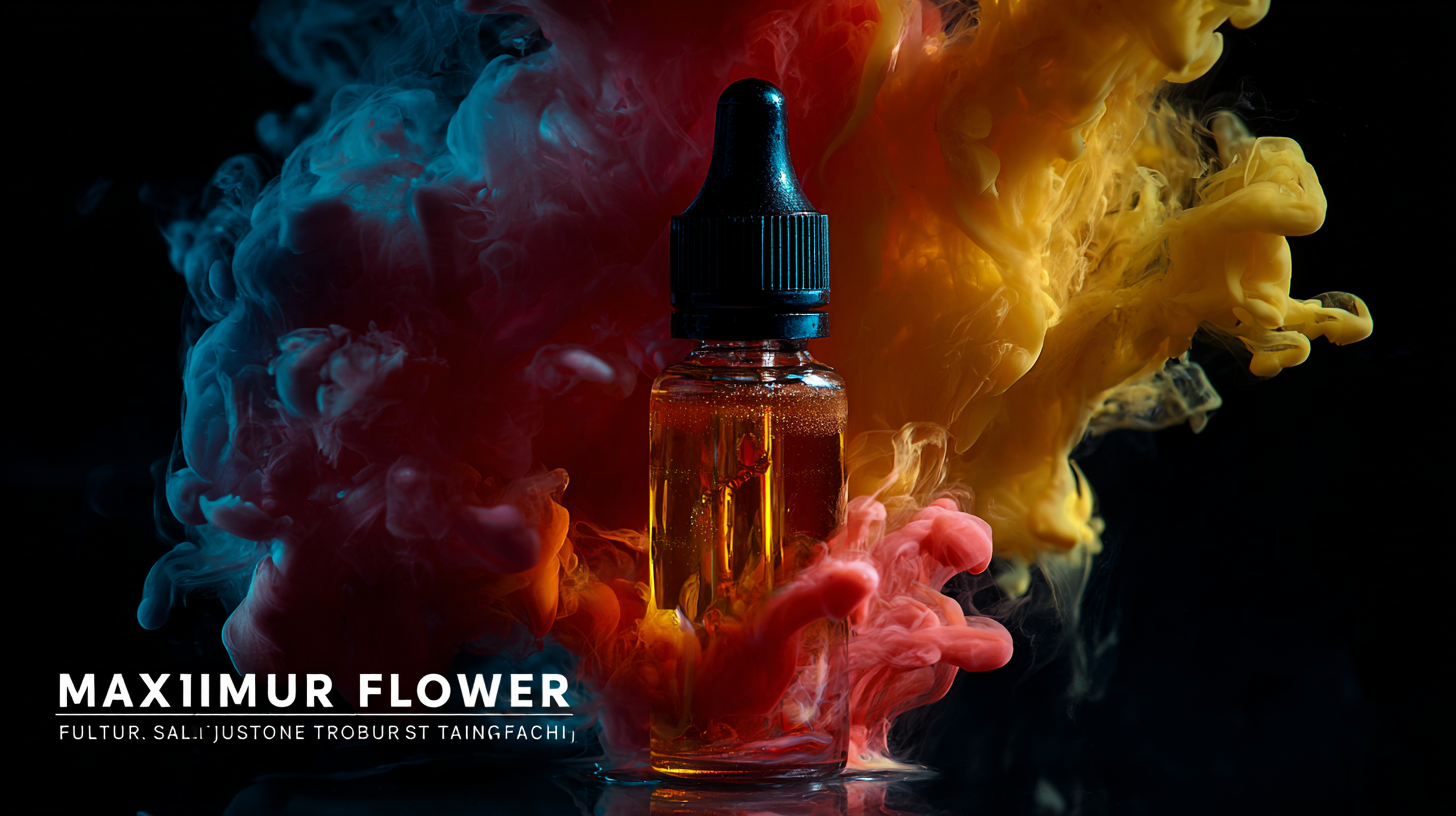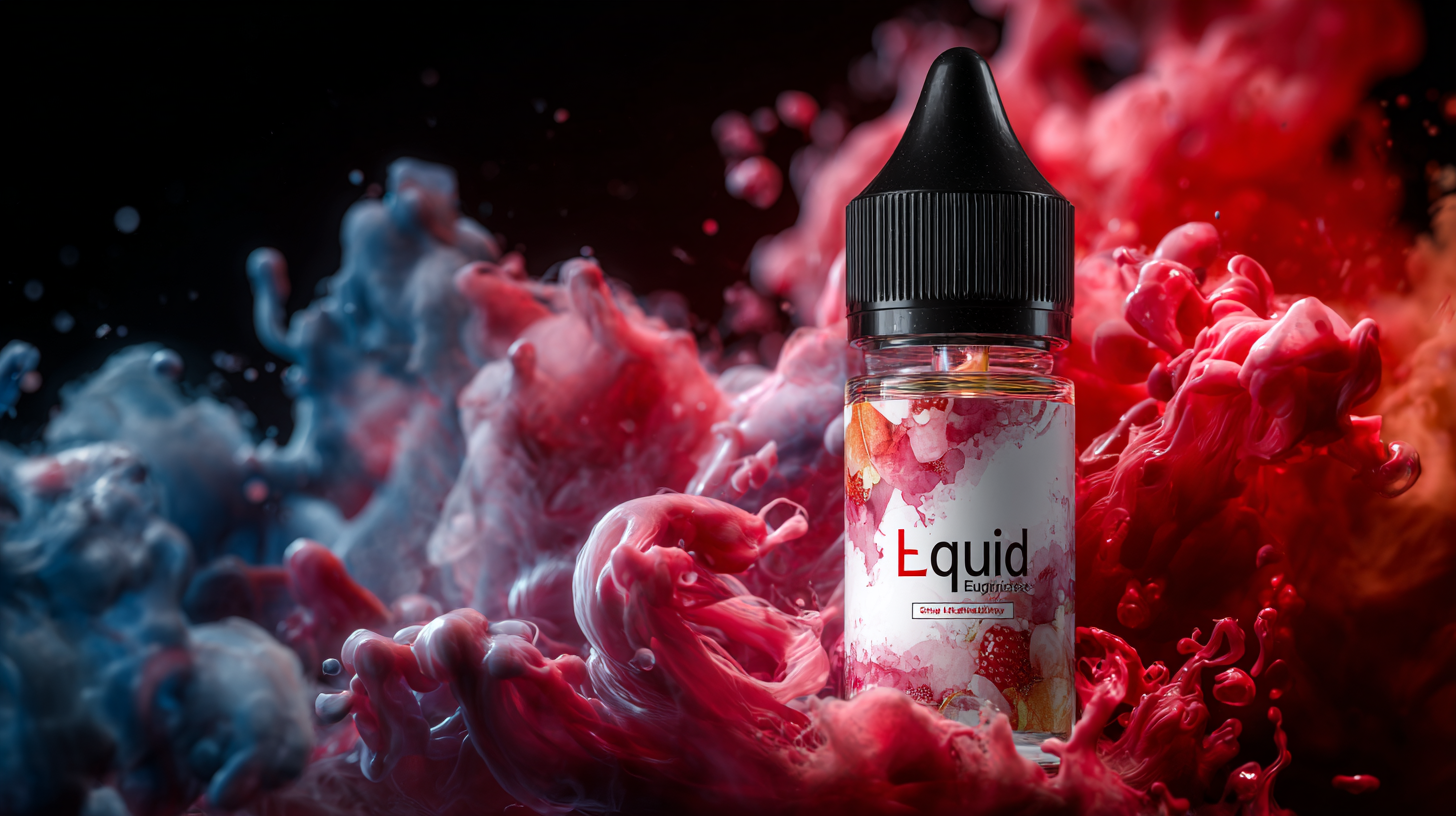

In the rapidly evolving e-liquid industry, maximizing customer satisfaction through after-sales support has become paramount. With the global e-liquid flavor market projected to reach USD 9.38 billion by 2025, the significance of enhancing customer experience cannot be overstated.

As vaping continues to gain popularity, brands must prioritize not only innovative e-liquid flavors but also robust after-sales services to build customer loyalty. Market analysis reveals that 40% of consumers cite flavor variety as a key factor in their purchasing decisions, emphasizing the need for companies to stay ahead of trends while ensuring that customers feel supported throughout their journey.
Looking towards the future, industry leaders are expected to adapt their strategies, focusing on personalization and engagement to foster lasting relationships with their customers.
In the dynamic world of e-liquid products, enhancing after-sales support is crucial for maximizing customer satisfaction. A recent industry report highlights that over 70% of customers consider effective after-sales service as a key factor in their purchasing decisions. This underscores the necessity for brands to invest in comprehensive support systems that address customer inquiries, provide product guidance, and resolve issues promptly. Offering multi-channel support, including live chat, email, and phone assistance, can significantly improve customer experiences and foster brand loyalty.
Furthermore, leveraging customer feedback can refine after-sales strategies. The 2022 E-Liquid Market Trends study indicates that brands that actively seek and implement customer suggestions see a 25% increase in repeat purchases. By utilizing tools like customer satisfaction surveys and post-purchase follow-ups, companies can gather valuable insights into consumer preferences and pain points. Additionally, improving educational resources such as how-to guides and flavor recommendations can enhance the overall customer journey, ensuring consumers feel supported throughout their experience with e-liquid products.
Customer feedback plays a pivotal role in the evolving landscape of e-liquid flavor innovations. In an industry where consumer preferences can shift rapidly, brands that actively seek and incorporate customer input are better positioned to meet demands and stand out in a saturated market. By analyzing feedback on existing flavors, manufacturers can identify trends and gaps, allowing them to experiment with new combinations that resonate with their audience. This collaborative approach not only enhances product relevance but also fosters brand loyalty.
Moreover, the importance of feedback extends beyond flavor development. It informs the entire after-sales support system. Engaging with customers post-purchase helps brands gauge satisfaction levels and address any concerns regarding flavor quality or product longevity. By actively listening to their customers, companies can refine their offerings and create a more personalized experience. This adaptability to consumer insights not only drives flavor innovation but also enhances overall customer satisfaction, ultimately leading to a thriving brand reputation in the competitive e-liquid market.

As e-liquid flavors continue to evolve, consumer preferences are shifting towards more innovative and unique profiles. Recent trends indicate a growing demand for natural and organic flavorings, aligning with a broader consumer movement toward health-conscious choices. As preferences diversify, flavors inspired by global cuisines and exotic fruits are gaining popularity. This trend mirrors the food industry’s latest insights, where consumers seek beverages that offer not just satisfaction but also functional benefits.
Moreover, the concept of sustainability is becoming integral to flavor development in the e-liquid market. As consumers become more environmentally conscious, they are looking for brands that emphasize eco-friendly practices and ethically sourced ingredients. This shift is reflected in the food sector, where innovations in sourcing and production are prioritized. E-liquid manufacturers can capitalize on this trend by not only enhancing flavor quality but also by communicating their commitment to sustainable practices, thereby increasing customer loyalty and satisfaction.

The vaping industry continues to navigate a complex landscape shaped by stringent global standards and compliance requirements. The implementation of the PACT Act has significant implications for the shipping of vaping products, presenting challenges that manufacturers and retailers must address to ensure regulatory adherence. As we look forward, organizations must prioritize compliance with current good manufacturing practices (cGMP) to uphold product quality and safety in e-liquid production. This commitment to high standards is vital not only for meeting legal obligations but also for maintaining customer trust and satisfaction.
Furthermore, as various regions adapt to emerging regulations, notably regarding packaging and distribution, businesses must remain agile. The recent suspension of several manufacturers following violations underscores the importance of constant vigilance and adherence to evolving legal frameworks. By embracing these challenges as opportunities, firms can enhance their operational strategies, ensuring they not only meet regulatory demands but also effectively engage with their customer base in a rapidly changing market. With the right focus on compliance, e-liquid manufacturers can thrive in this competitive landscape while contributing to consumer satisfaction through reliable, high-quality products.
| Dimension | Description | Current Trends | Future Projections |
|---|---|---|---|
| Customer Support | After-sales service to enhance customer satisfaction | Increased online support via chatbots and social media | Personalized support experiences through AI integration |
| E-Liquid Flavor Diversity | Range of flavors available in the market | Growing popularity of unique and exotic flavors | Emergence of new flavor profiles tailored to consumer preferences |
| Compliance Standards | Regulations governing e-liquid production | Strict adherence to health and safety regulations | Increased regulatory measures ensuring product safety |
| Distribution Channels | Methods of e-liquid distribution | Growth of e-commerce platforms for distribution | Integration of advanced logistics solutions for efficient deliveries |
| Consumer Preferences | Changing tastes of e-liquid consumers | Increased demand for organic and natural ingredients | Shift towards sustainable and ethical sourcing practices |
As the e-liquid market continues to evolve, sustainability and market adaptation strategies have become critical for brands aiming to future-proof their offerings. According to a report by Market Research Future, the global e-liquid market is projected to reach approximately USD 27.3 billion by 2027, growing at a CAGR of 23.8%. This growth underscores the importance of brands not only in capitalizing on current trends but also in preparing for changing consumer preferences that prioritize eco-friendliness and ethical production practices.
Sustainability in e-liquid production involves the sourcing of ingredients that minimize environmental impact, such as using natural flavorings and biodegradable packaging. A 2021 sustainability report highlighted that over 60% of consumers are willing to pay a premium for products that are environmentally friendly, demonstrating a significant shift in purchasing behaviors. Additionally, as regulatory frameworks become tighter, brands must adapt by ensuring compliance with new standards while maintaining quality and customer satisfaction. Investing in R&D for innovative flavors that appeal to health-conscious consumers will be essential for brands to stay relevant in an increasingly competitive landscape.